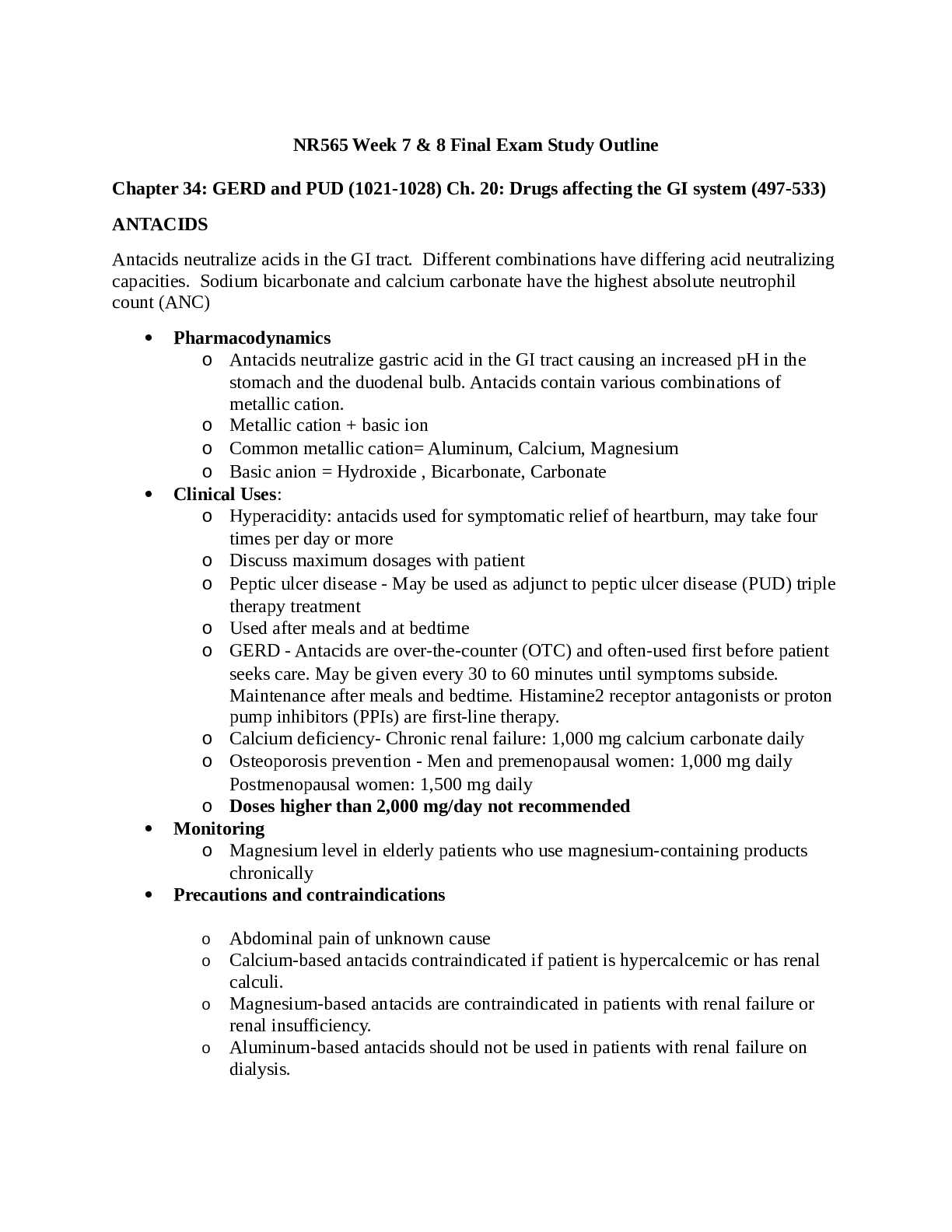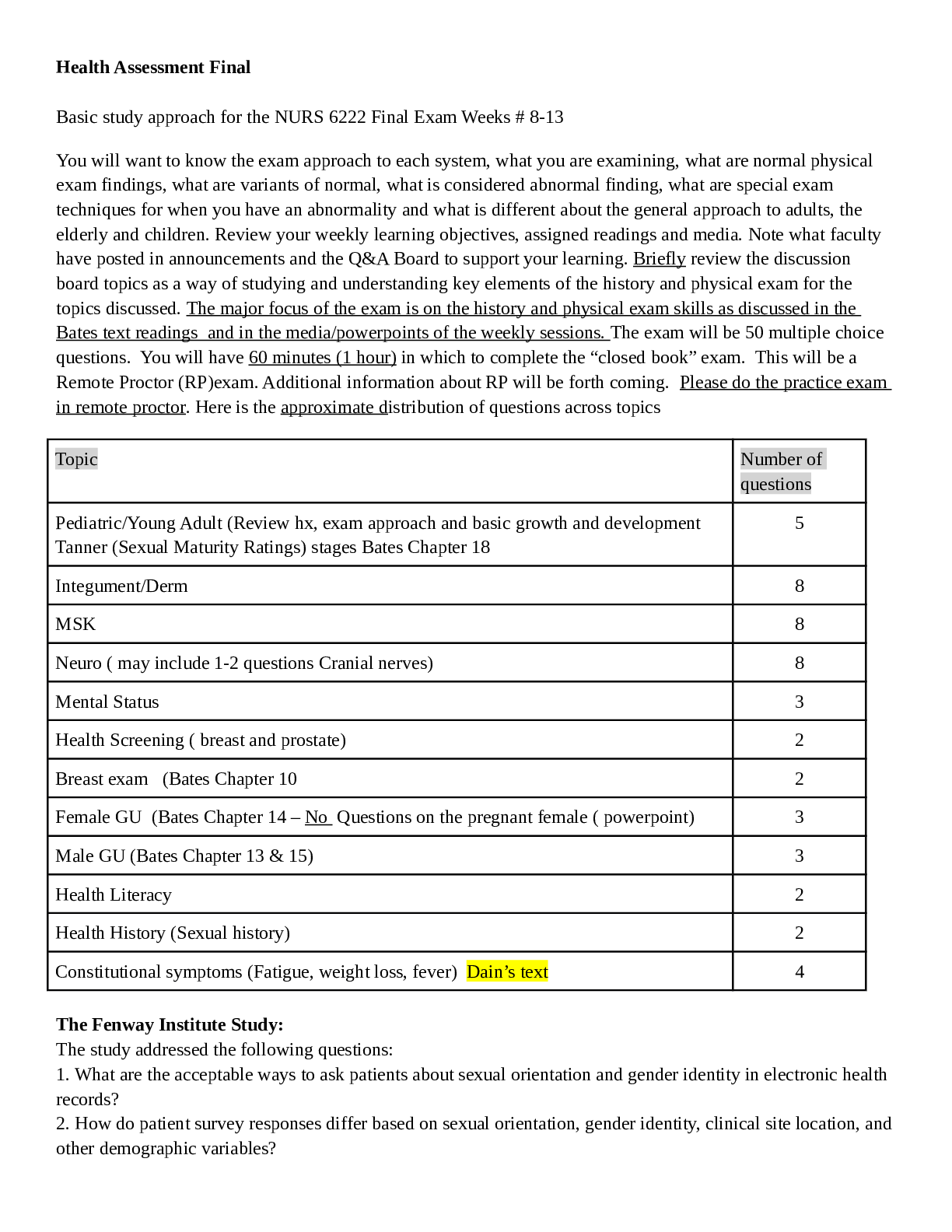*NURSING > STUDY GUIDE > NR 507 Final Exam Week 8 Study Guide (All)
NR 507 Final Exam Week 8 Study Guide
Document Content and Description Below
NR 507 Final Exam Week 8 Study Guide endometrial cycle and the occurrence of ovulation Ovulation is the release of an ovum from a mature follicle and marks the beginning of the luteal/secretory phase... of the menstrual cycle. HCG can be detected in maternal blood and urine 8 to 10 days after ovulation. Ovulatory cycles appear to have a minimum length of 24 to 26.5 days. Once ovulation occurs and serum progesterone levels increase, the endometrial tissue develops secretory characteristics (secretory phase). If implantation of a fertilized ovum does not take place, endometrial tissue begins to break down approximately 11 days after ovulation (ischemic phase of menstruation) Determines whether ovulation has occurred by obtaining endometrial tissue on day 26 of 28-day menstrual cycle (or postovulatory day 12). Normal menstrual cycle 27-30 days. Ovulatory phase: estrogen levels dip; progesterone levels begin to rise, Corpus luteum begins to develop; endometrium enters secretory phase. Shift in temperature is related to ovulation. uterine prolapse is descent of the cervix or entire uterus into the vaginal canal. Loss of support by pelvic muscles. Uterine prolapse descent or herniation of the uterus into or beyond the vagina because of weakness of the pelvic musculature, ligaments, and fascia or obstetric trauma and lacerations sustained during labor and delivery. polycystic ovarian syndrome (PCOS) Strong genetic factor -A hyperandrogenic state is a cardinal feature in the pathogenesis of PCOS. Glucose intolerance/insulin resistance (IR) and hyperinsulinemia often run parallel to and markedly aggravate the hyperandrogenic state. Signs and symptoms of women with PCOS may change over time, with metabolic syndrome becoming more prominent with age. In addition, polycystic ovaries may be associated with Cushing syndrome, acromegaly, premature ovarian failure, simple obesity, congenital adrenal hyperplasia, thyroid disease, androgen-producing adrenal tumors or ovarian tumors. Anovulation results from metabolic abnormalities contributing to obesity include Cushing syndrome, Cushing disease, polycystic ovary syndrome. testicular cancer and conditions that increase risk: Painless testicular enlargement is the first sign of testicular cancer. Signs of testicular cancer include abnormal consistency, induration, nodularity, or irregularity of the testis A firm, nontender testicular mass or diffuse enlargement is found in the majority of cases. Risk factor for men with undescended testicles, a factor in some studies correlated with DES exposure. The risk of testicular cancer is 35 to 50 times greater for men with cryptorchidism. In men between the ages of 15-35 y/o. Germ cell tumors constitute 90% of testicular cancer. Risk factors include history of cryptorchidism, abnormal testicular development, HIV, and AIDS, Klinefelter syndrome, and hx of testicular cancer. Scrotal incisions may increase risk or recurrence. Some affected men have persistent paresthesia, Raynaud phenomenon, or infertility. Cryptorchidism (one of the testes fails to descend into the scrotum) significantly increases the risk of testicular cancer symptoms that require evaluation for breast cancer woman who carries a mutation in the BRCA1 or BRCA2 genes. First sign of breast cancer is a painless lump. Other presenting signs include palpable nodes in the axilla, retraction of tissue (dimpling) (Fig. 25.49), or bone pain caused by metastasis to the vertebrae. Benign breast disease (BBD) most common symptoms reported are pain, palpable mass, nipple discharge. Strong link between stress and breast cancer progression. shift-work and its disruptive effects on circadian rhythms and sleep deprivation at night have been suggested as a risk factor for breast cancer. Clinical manifestation of breast Ca: Chest pain nipple discharge Dilated blood vessel nipple retraction Dimpling of skin pitting of the skin Edema reddened skin, local tenderness, warmth Hemorrhage skin retraction Local pain ulceration Nipple/areolar eczema signs of premenstrual dysphoric disorder Cyclic recurrence (in the luteal phase of the menstrual cycle) of distressing physical, psychologic, or behavioral changes that impair interpersonal relationships or interfere with usual activities and resolve after menstruation. It is linked to hormonal changes emotional symptoms of depression, anger, irritability, aggression, fatigue, and impulse control. Physical symptoms s/s breast tenderness, abdominal bloating, headache, and swelling of extremities, water retention, bloating, weight gain. Box 25.5 Diagnostic Criteria for Premenstrual Dysphoric Disorder • A. ≥5 symptoms below: occur in most cycles during the week before menses onset, improve within a few days after menses onset, and diminish in the week postmenses • B. One (or more) of the following symptoms must be present: o a. Marked affective lability o b. Marked irritability or anger or increased interpersonal conflicts o c. Marked anxiety, tension • C. One (or more) of the following symptoms must also be present: o a. Decreased interest o b. Difficulty concentrating o c. Easy fatigability, low energy o d. Increase or decrease in sleep o e. Feelings of being overwhelmed o f. Physical symptoms such as breast tenderness, muscle or joint aches, “bloating” or weight gain NOTE: Criteria A–C must be present for most menstrual cycles in the preceding year • D. Symptoms are associated with significant distress or interferences with work, school, relationships • E. The disturbance is not merely an exacerbation of another disorder such as major depression, panic disorder, persistent depressive disorder, or a personality disorder • F. Criterion A should be confirmed by prospective daily ratings in at least two symptomatic cycles • G. The symptoms are not due to physiological effects of a substance or another medical condition dysfunctional uterine bleeding (DUB) Heavy or irregular bleeding in the absence of organic disease, such as submucous fibroids, endometrial polyps, blood dyscrasias, pregnancy, infection, or systemic disease. Increased endometrial bleeding is correlated with a change from ovulatory to anovulatory cycles due to high estrogen levels. Heavy & unpredictable flow bleeding (clot & flooding) pathophysiology of prostate cancer More than 95% of prostatic neoplasms are histologically similar to adenocarcinomas and rely on androgen-dependent signaling for their development and progression.108-110 Most of these neoplasms occur in the periphery of the prostate. Heterogenous group of tumors. Testicular testosterone provides the main source of androgens in the prostate and is the major circulating androgen, whereas DHT predominates in prostate tissue and binds to the AR (androgen receptors) with greater affinity than does T (hormone testosterone). Androgen production outside of the testes, or extra testicular sources. Testosterone is converted to dihydrotestosterone. DHT is the most potent intraprostatic androgen .......continued.... [Show More]
Last updated: 1 year ago
Preview 1 out of 17 pages
Instant download
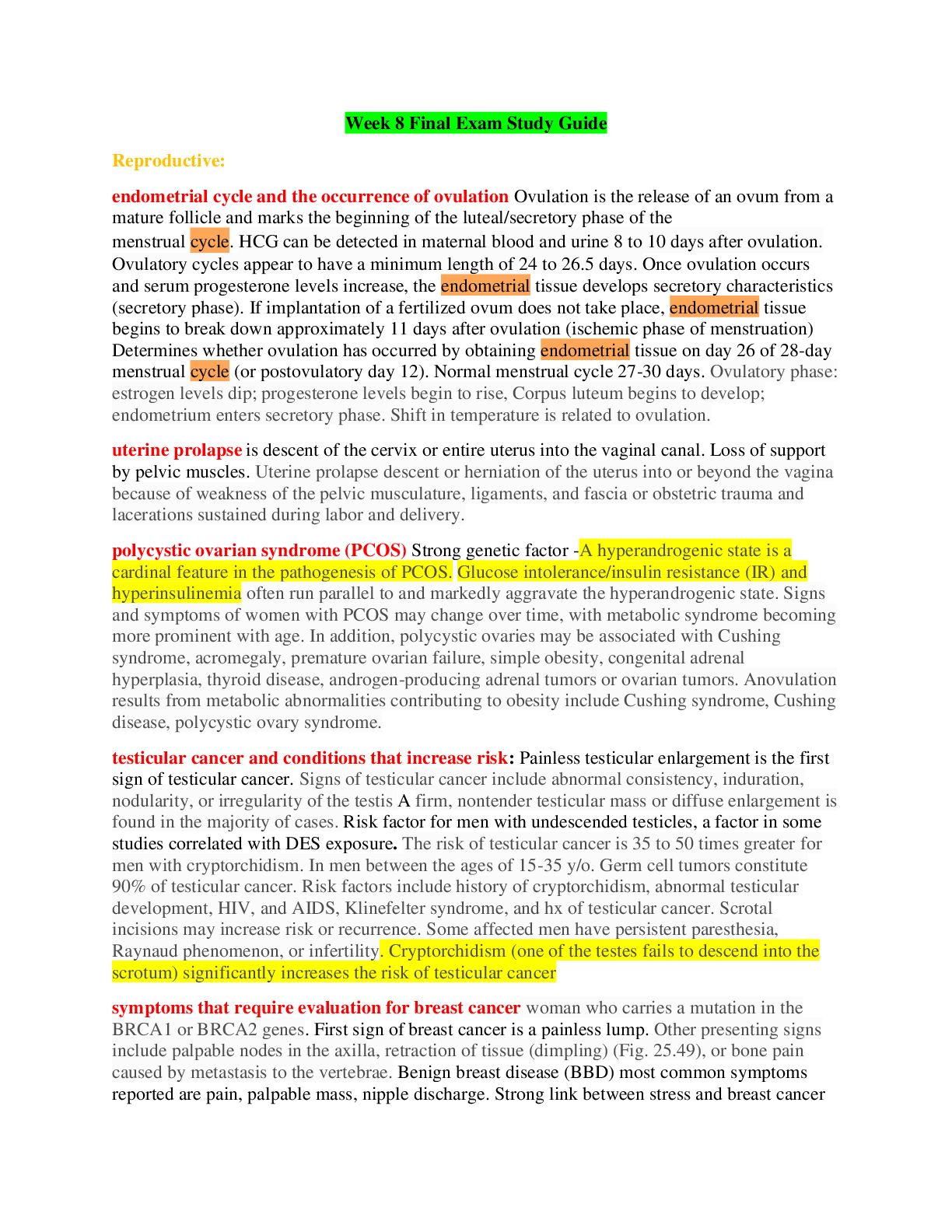
Buy this document to get the full access instantly
Instant Download Access after purchase
Add to cartInstant download
Reviews( 0 )
Document information
Connected school, study & course
About the document
Uploaded On
Feb 13, 2021
Number of pages
17
Written in
Additional information
This document has been written for:
Uploaded
Feb 13, 2021
Downloads
0
Views
43



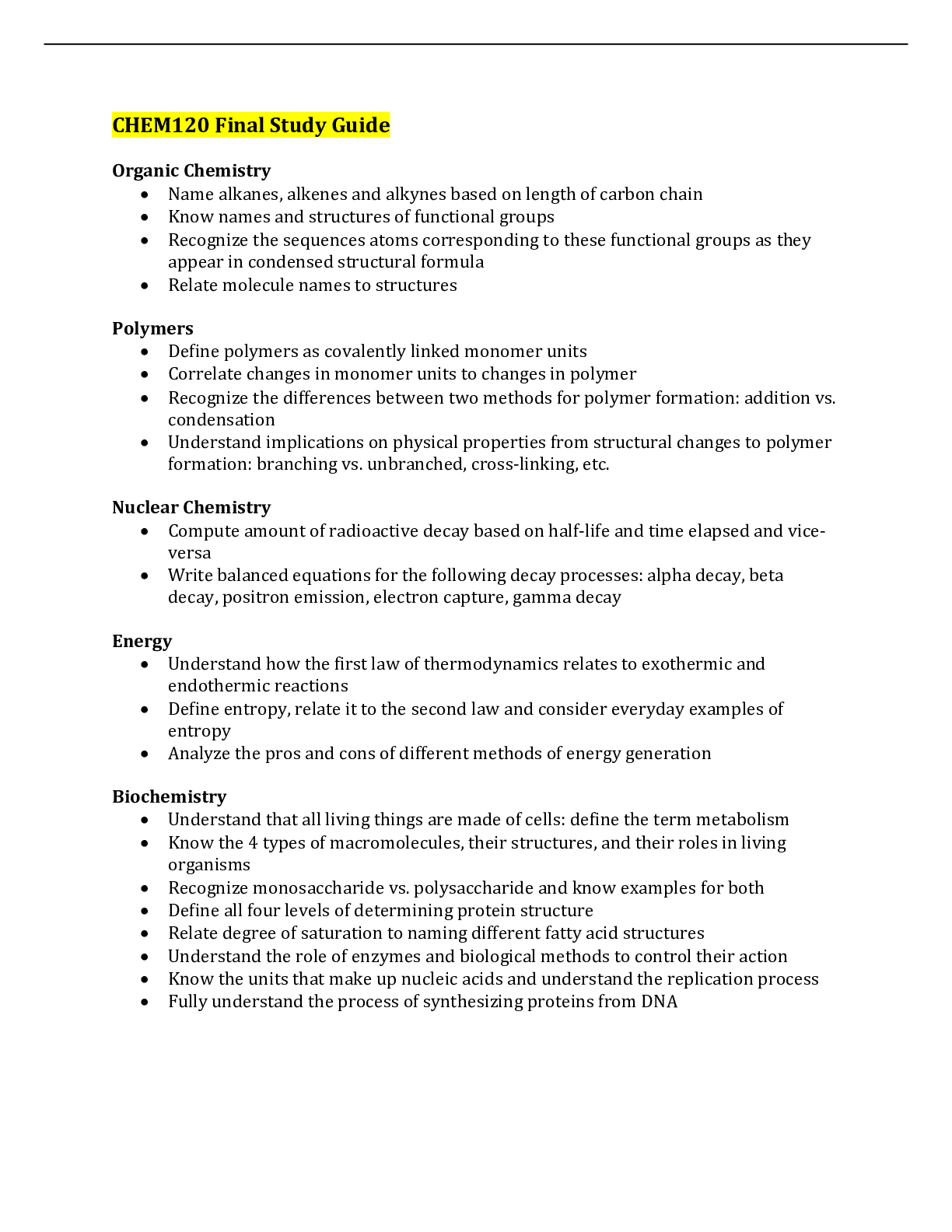

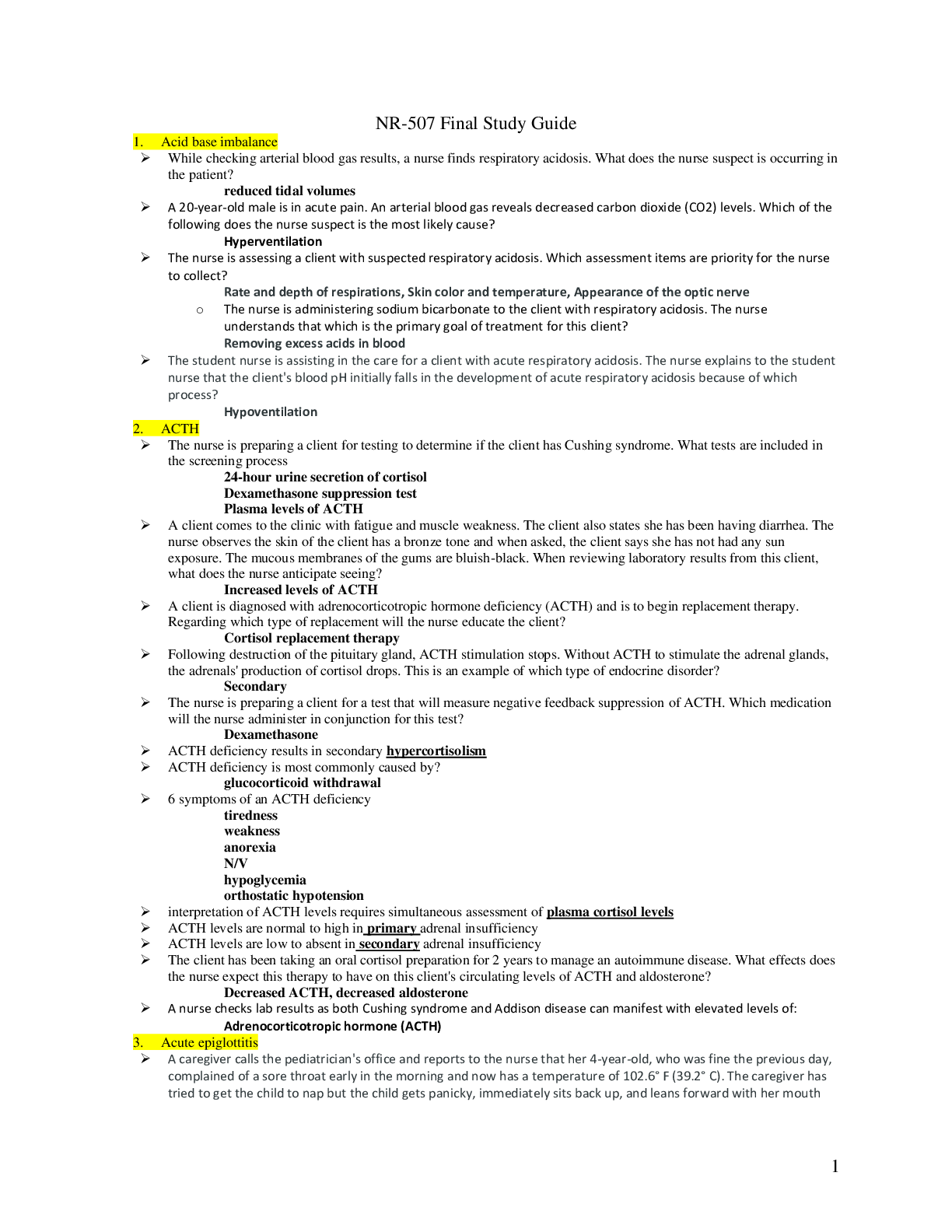
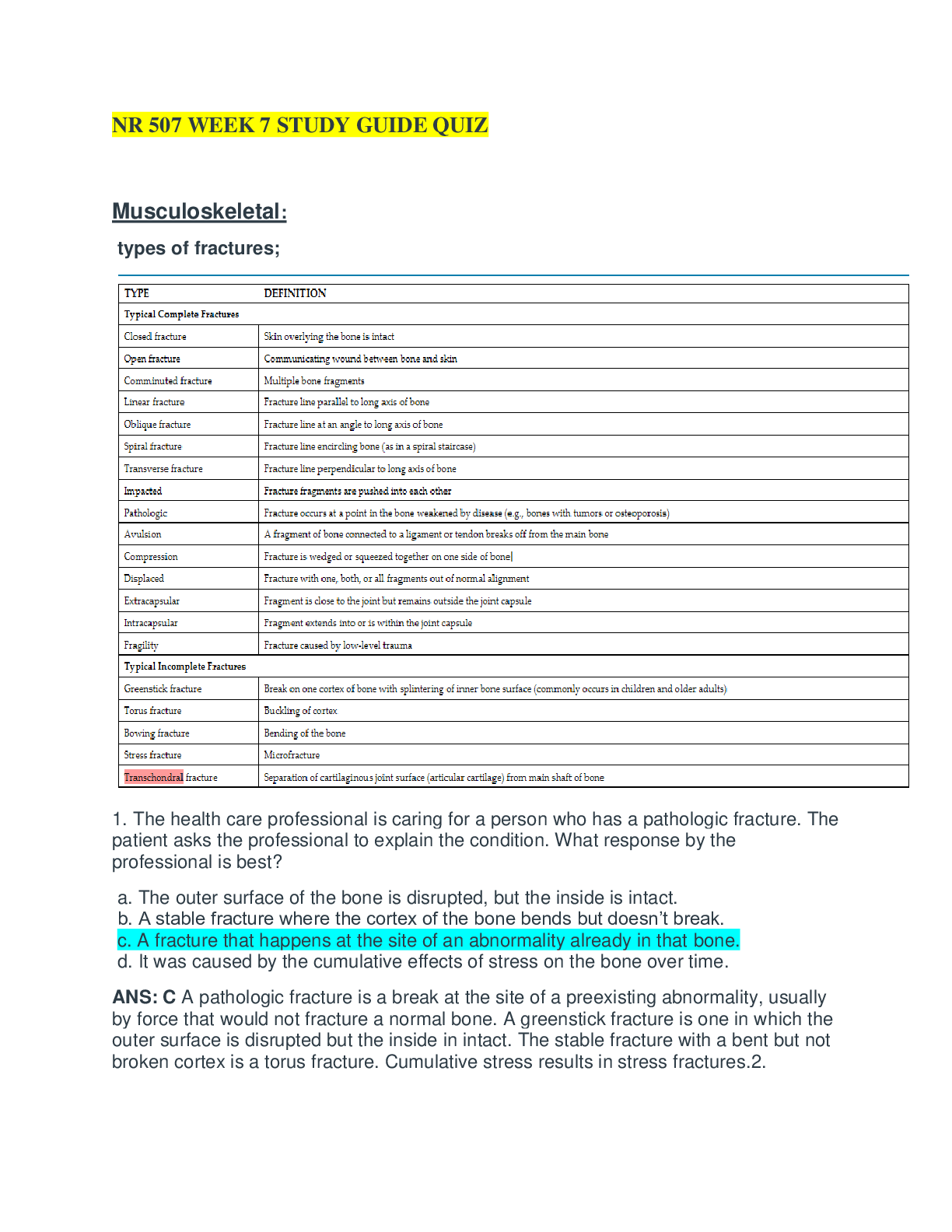
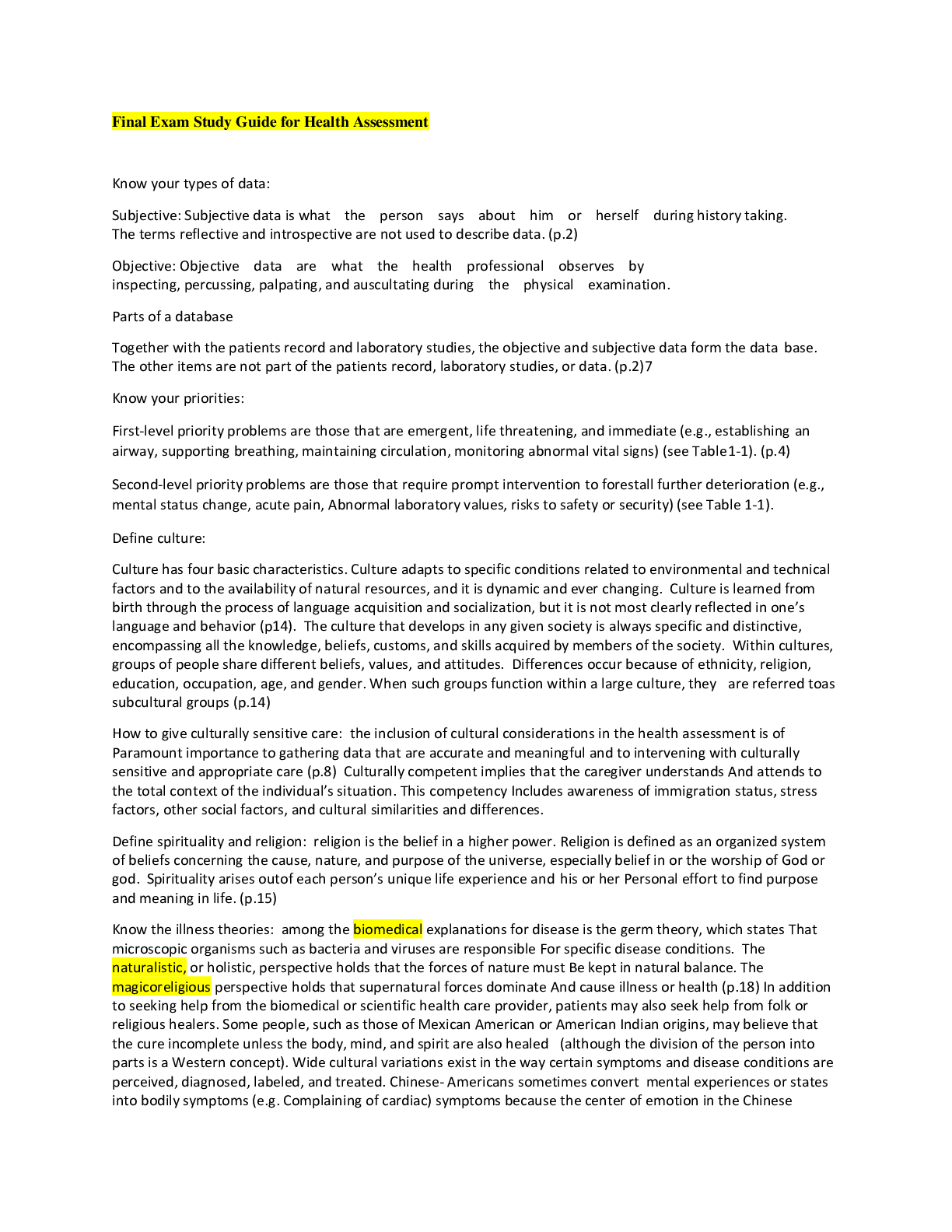


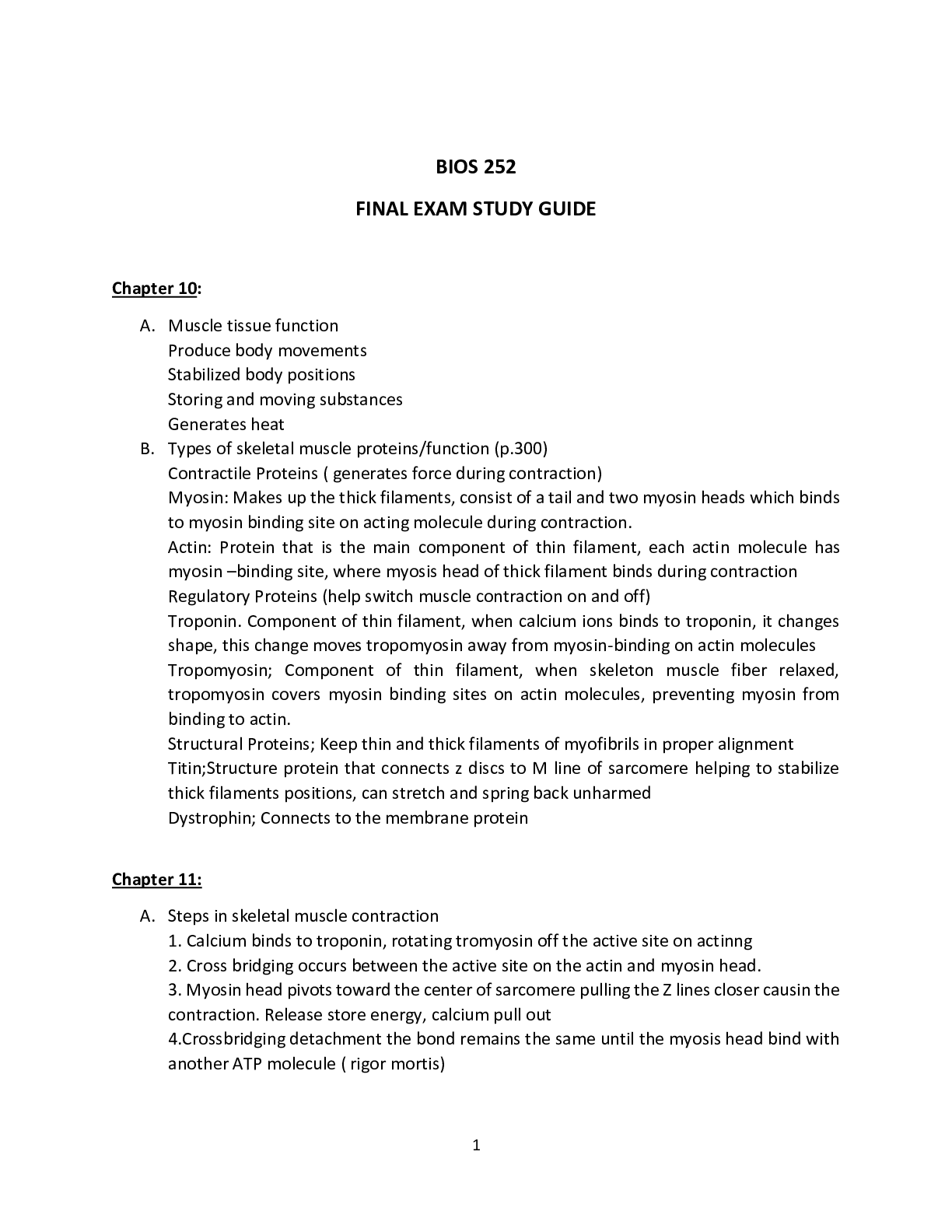
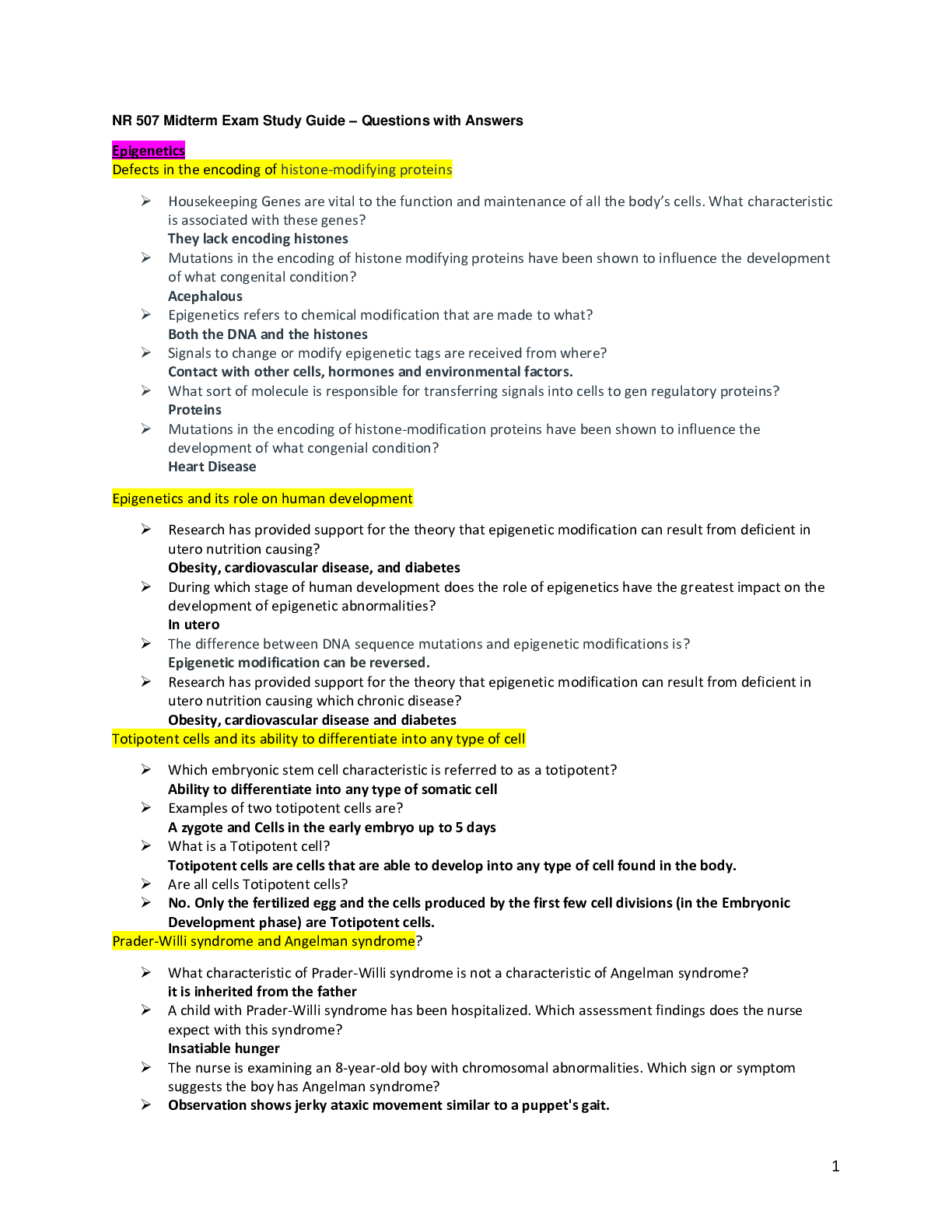
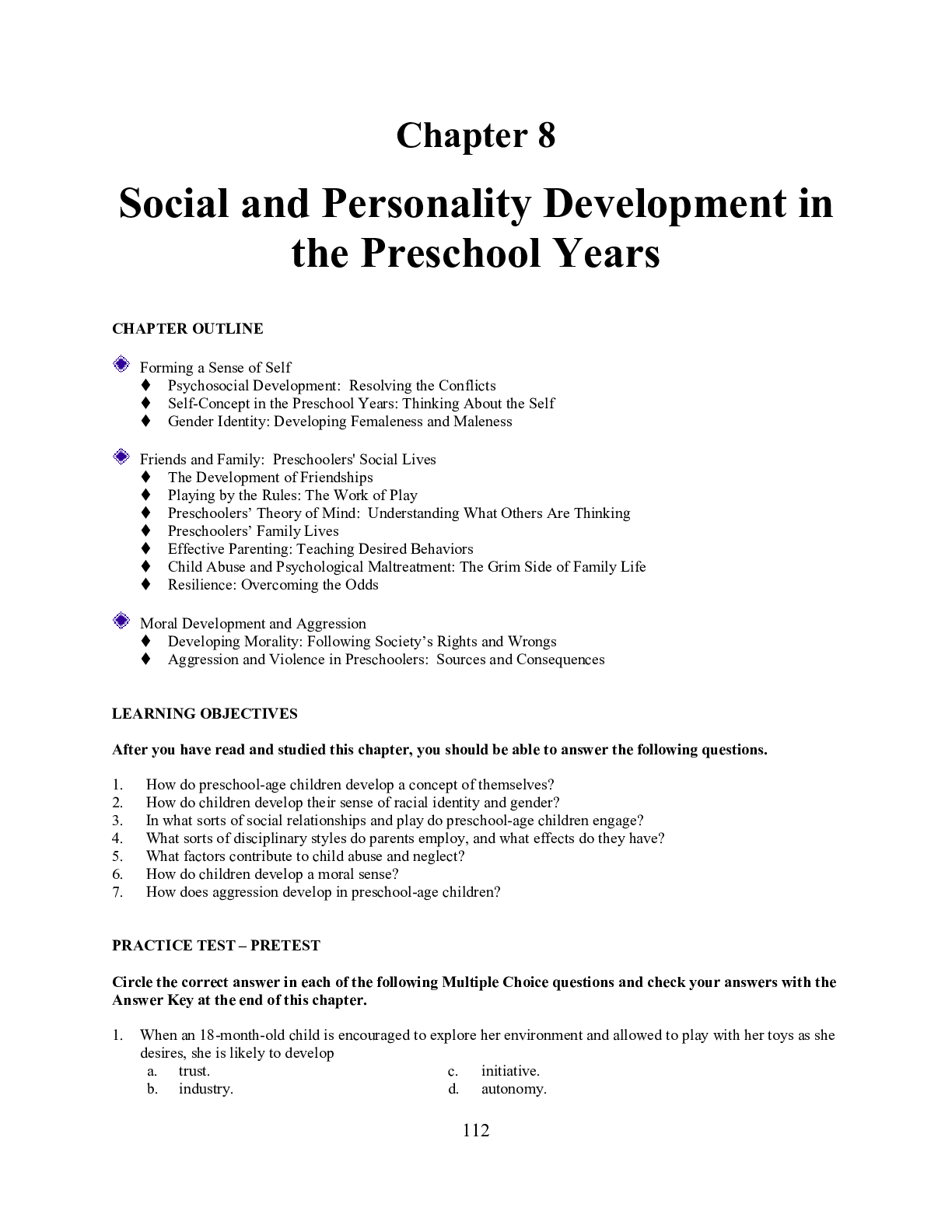

.png)
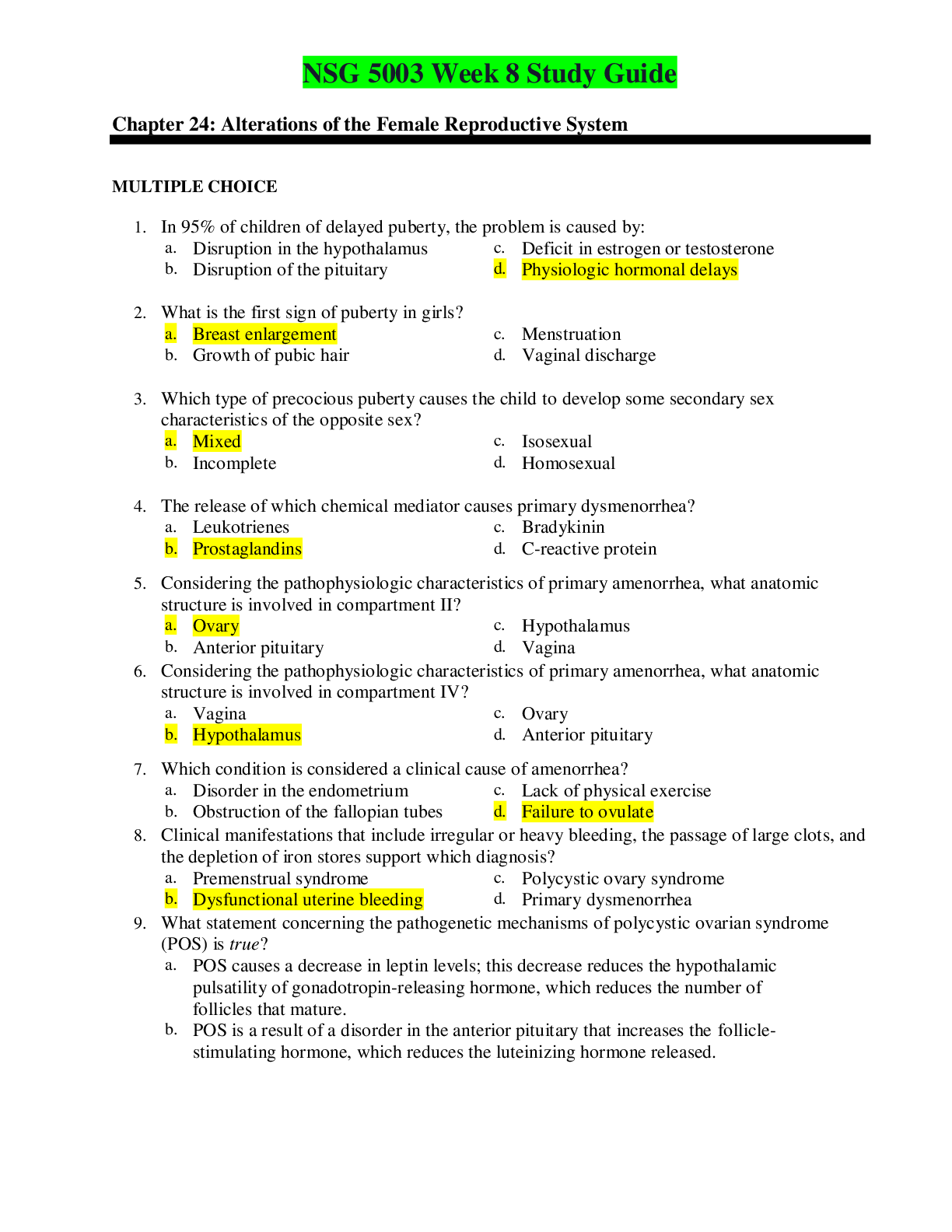
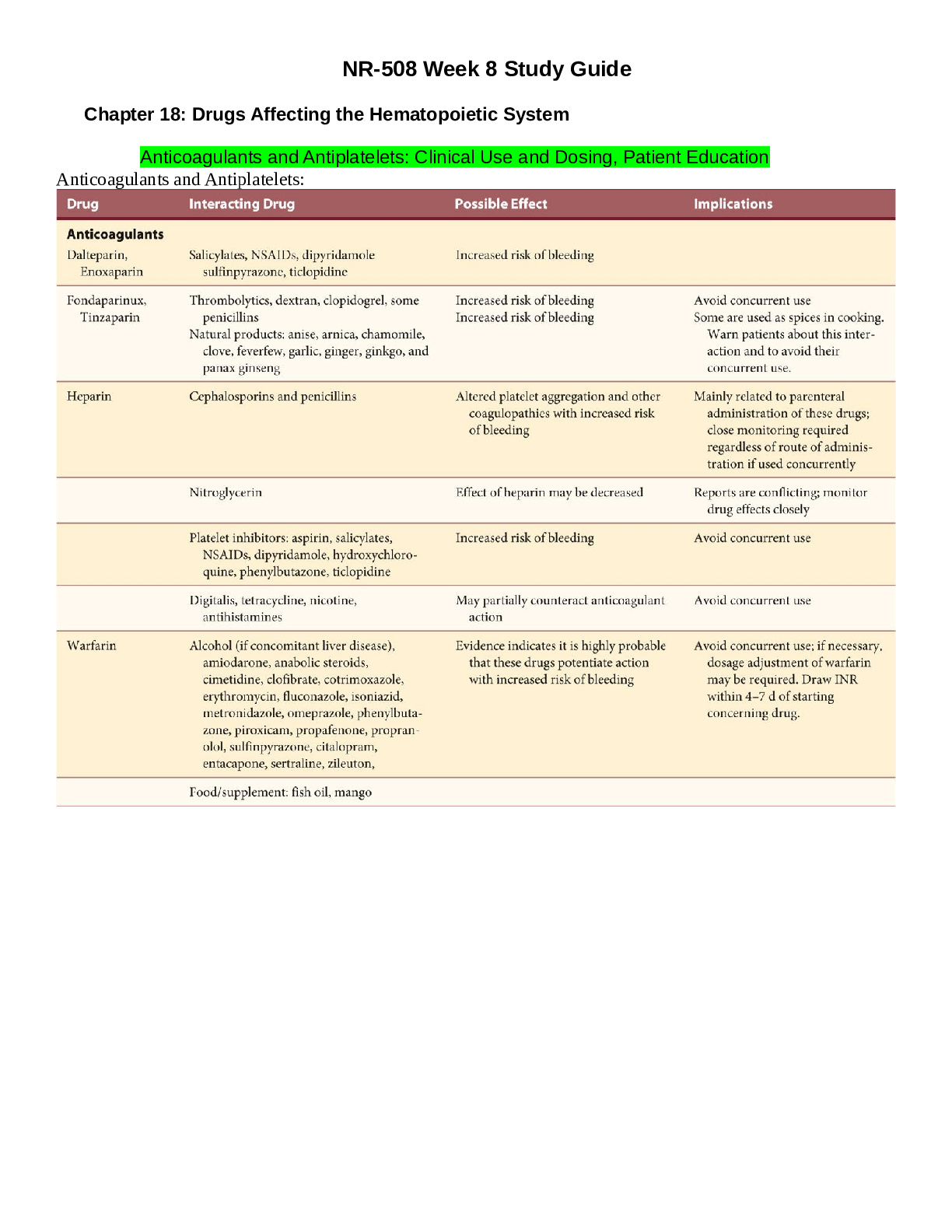
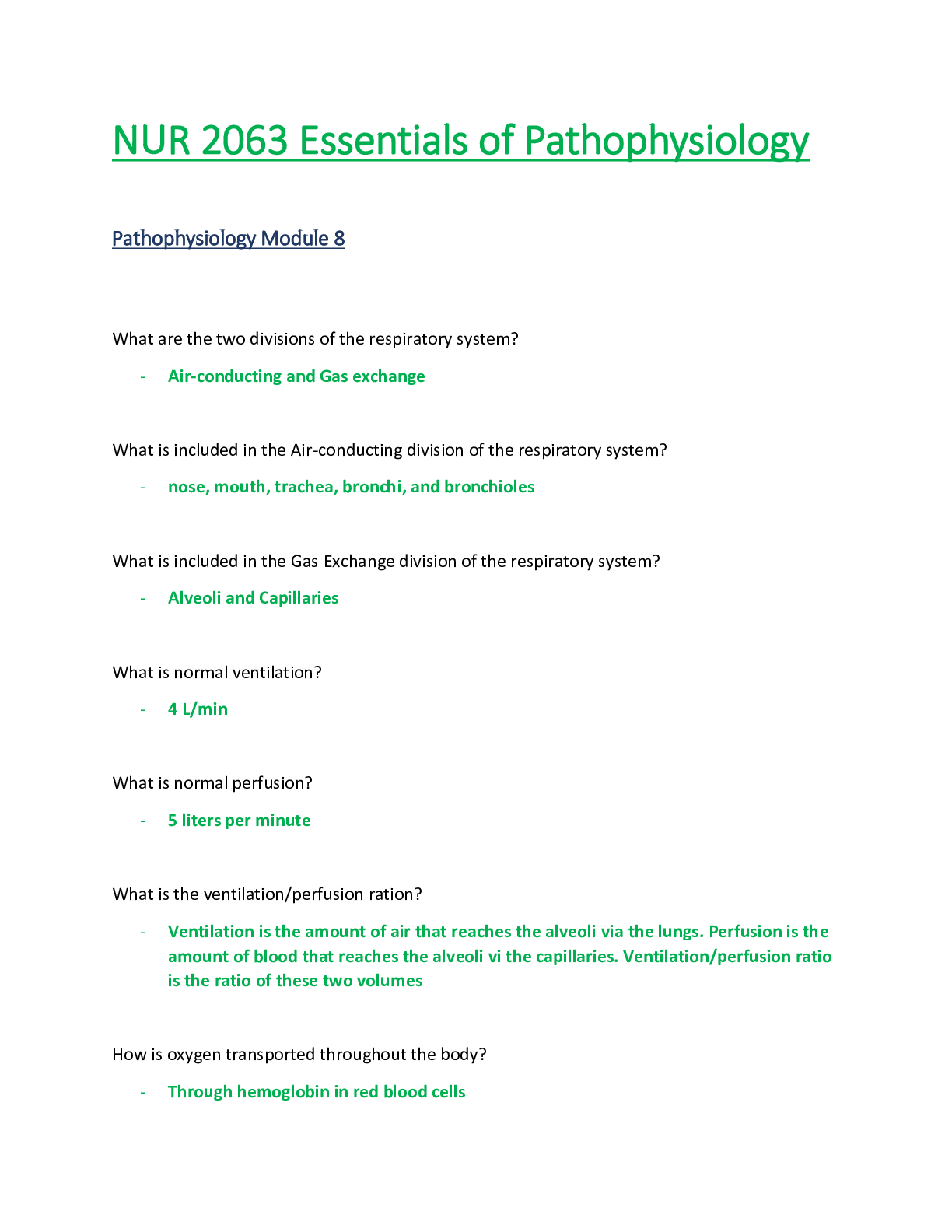
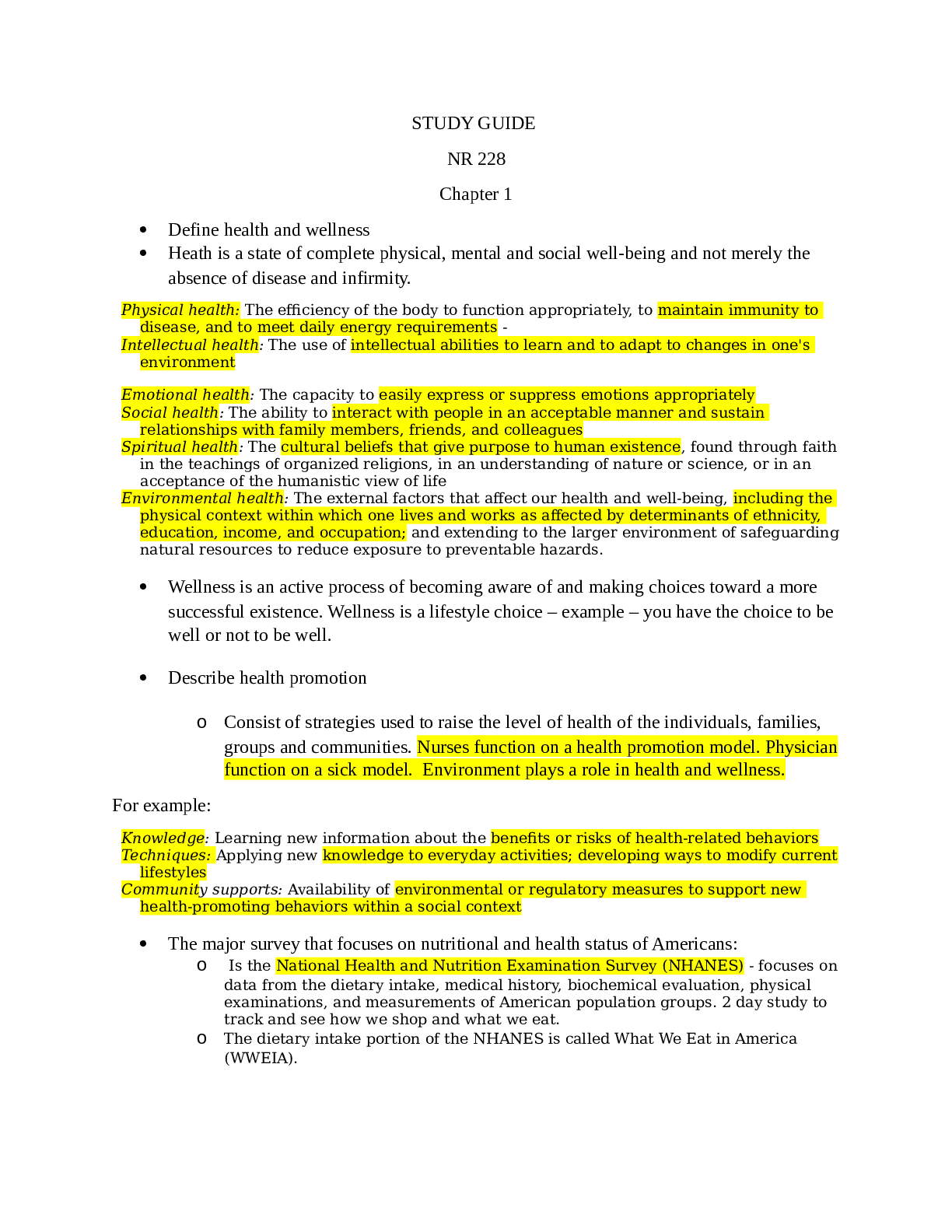

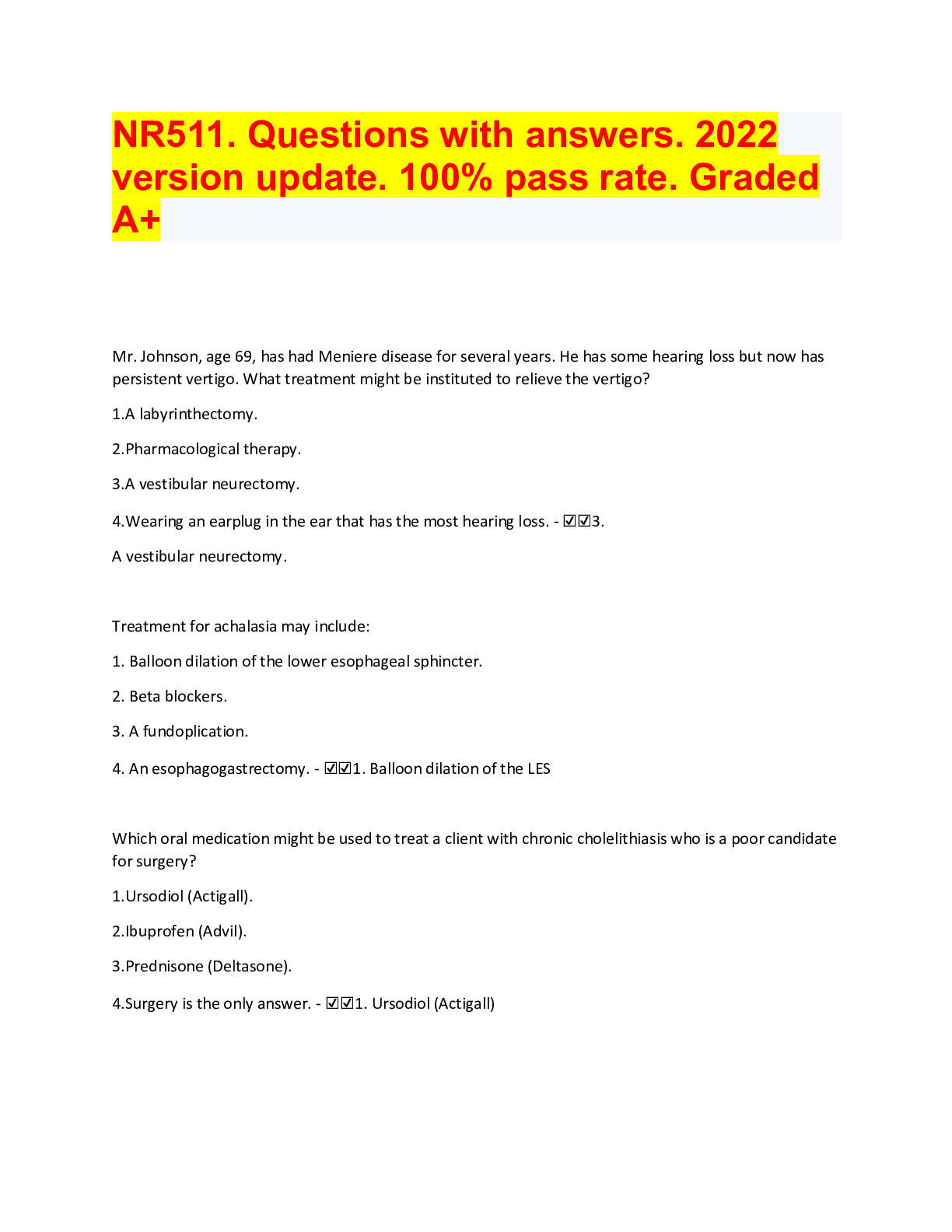
.png)
